Existing User Log In
New User Registration
Register for a free account to gain full access to the VGChartz Network and join our thriving community.



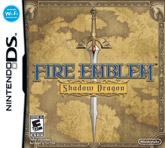

America - Front
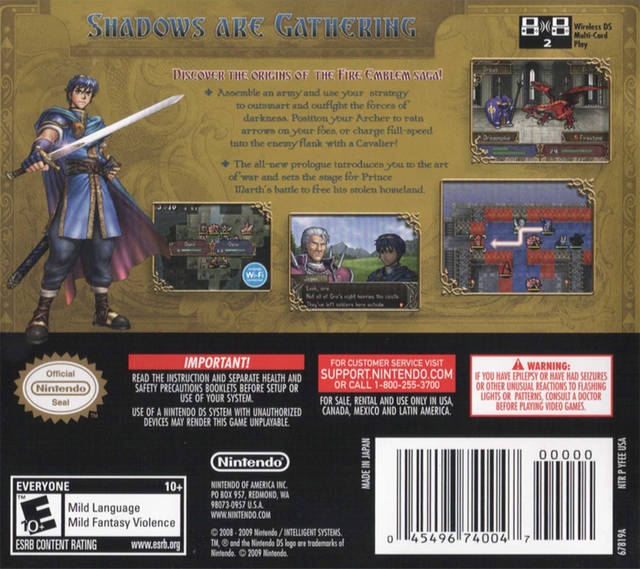

America - Back

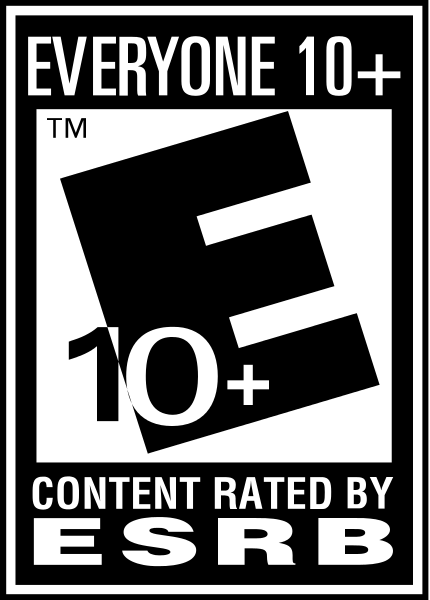
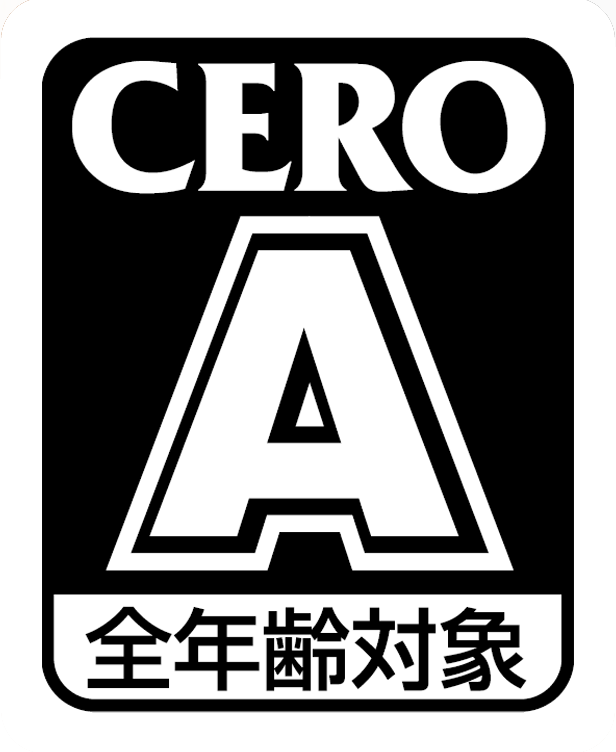
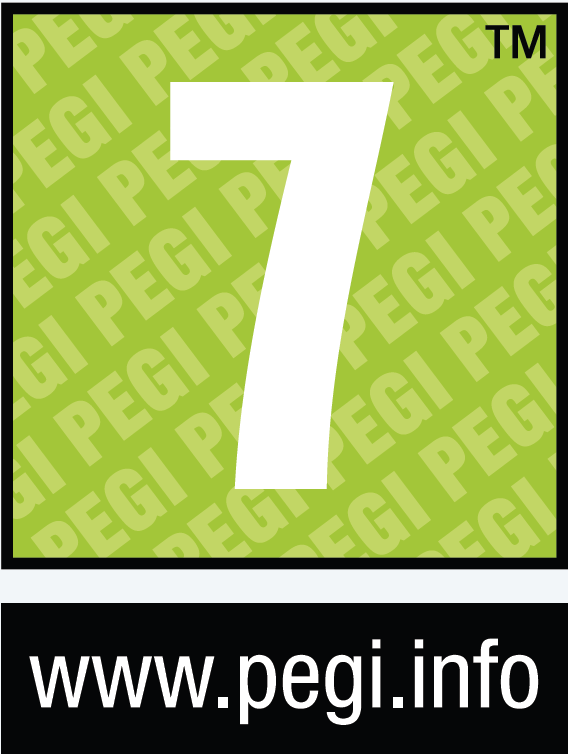
Fire Emblem: Shadow Dragon
Fire Emblem: Shin Ankoku Ryuu to Hikari no Ken
ファイアーエムブレム 新・暗黒竜と光の剣
Intelligent Systems
Strategy
 02/16/09 Nintendo
02/16/09 Nintendo  08/07/08 Nintendo
08/07/08 Nintendo  12/05/08 Nintendo
12/05/08 Nintendo
| Owners: | 239 | |
| Favorite: | 11 | |
| Tracked: | 1 | |
| Wishlist: | 12 | |
| Now Playing: | 3 | |
Fire Emblem: Shadow Dragon is a remake of the first game in the series, that appeared on the NES and was never released outside of Japan. It's already the 11th game in Nintendo's turn-based strategy RPG series and the fifth to see a release in the West. You play as Prince Marth, who also appears in the Super Smash Bros series, whose kingdom is conquered by the evil wizard Gharnef and the dragon king Medeus. After seeking refuge on a small island he'll have to return to the mainland to gather an army in order to defeat the evil that invaded his country and continent. That basically sums up the storyline in Shadow Dragon. Where previous Fire Emblem games had massive storylines that told of political intrigues, genocide, racism and religion, this one is very one-dimensional. For some reason the developers decided to make a remake that stays very true to its NES roots, when the storytelling in videogames was still very much in its infancy, instead of digging deeper into the characters and storyline. This is a missed opportunity in my opinion, but once you've accepted that the game isn't as much RPG as the previous games you'll find one of the best strategy games of the last several years. Some typical RPG elements are still very much present though; the setting is medieval/fantasy, there are dragons and magic and there are still quite a few conversations in the game.
Typical for the Fire Emblem series is the emphasis on the characters, something that distinguishes it from regular strategy games. In fact I think only Suikoden surpasses Nintendo's SRPG in number of playable characters, as Shadow Dragon features well over 50 playable characters, each with its own background, class (such as warriors, bowmen, paladins, thieves, healers, mages), growth, strengths and weaknesses. Most of these units will have to be recruited during battle, either by talking to him/her with a certain person or by visiting towns. Sometimes reinforcements are automatically added during the fights. The (in)famous permadeath system is something of a signature for Fire Emblem and is obviously also in place in Shadow Dragon, meaning that once a character dies he or she will never return. Since you'll spend hours and hours with your core group and will have spent valuable experience points on a character a death will usually result in a voluntary restart. L+R+Select+Start (reset) will become your new best friend in this game, especially on the harder difficulties. The permadeath system does add a lot to the strategy because you'll want to avoid a character dying at all costs but will also have to make sure the weaker units will gain experience -- a tough catch-22.
You'll likely spend 90% of your time in this game on the battlefield, which is divided into squares like a checkerboard. Your in control of every unit in your army and each of them can move a limited number of squares each turn and perform an action. When located next to an enemy you can attack with one of the maximum five weapons a unit can carry. Swords are strong against axes that are strong against lances. There are a huge number of different weapons in the game, each with their own characteristics and tactical benefits. In a window that pops-up you can view the statistics of the battle; the chance you have to hit, whether you can strike twice, the amount of damage you'll deal and receive. Obviously this information is important to determine whether you'll survive an attack. By clicking on an enemy character you can see its range. It's important to keep in mind how many attacks your unit can (and most of the time will) endure in the enemy's round at a certain place. When you’ve used all the characters in your army it’s the enemy’s turn. Just like your own army the enemy will move its units one by one. The army of the enemy can consist of over 50 units, but you won't have to face them all at once. The pacing is very well done. If you want you can click through the enemy's turn, but this does remove some of the tension. The AI of the enemy is very good and will punish your mistakes 90% of the time (I'd say 100% in the higher difficulty settings). The main difference between the difficulties are the statistics of the enemy units. In the lower difficulties you might still survive after two or three attacks but from Hard 2 and higher the levels of the enemy soldiers are so good that making a strategic mistake by keeping a unit in range to attack will mean death. It's basically a game of chess, being beat hurts, because it's always because of your own mistakes. If you make the right choices you'll never have to die in the game.
There are over 20 chapters in the game of which most will take you about an hour to finish, not counting the restarts. Each of these has its own strategic problems to overcome aside from the enemies, including rivers that can only be crossed in a single place, castles with prisoners to free and fields protected by long range weapons that will kill your flying units immediately. New in Shadow Dragon are the one-use-only "Save Points" where you can save during battle. While purists might detest the ability to save at all, making saving part of the strategy is a very good solution, at the very least much better than the "save-whenever-you-want" approach in the Wii iteration Radiant Dawn. On the field you can also visit towns and houses, level-up in the arena and buy weapons and items in the shops that are located in the field. This all sounds complex and it certainly takes some time to get used to all the options, but if you take your time to get to know the basics you'll discover a very deep and rewarding strategy game that has near endless options to clear a battle. For those new to the series the "Normal" mode has a Prologue that introduces the gameplay very well.
The dual screen functionality is absolutely perfect for the game. During battle the upper screen shows the statistics of the selected unit or the map of the entire field and switching between the two is easily done with the R button. The maps are 2D and look pretty good, but as is the norm for the series the game doesn't push the system too hard technically. Even so the man-to-man battle animations that are shown on the top screen are impressive, as are the short story sequences in-between chapters. It's a bit of a shame that instead of making a different sprite for every character in the map-view, Intelligent Systems opted to have the same sprite for every class. This might cause you to search for the unit you want a few times. I also really don't understand the decision to go for flattened 3D polygons to represent the characters in the dialogue parts. The artwork in previous Fire Emblem games has been great and we've seen numerous examples of amazingly drawn DS characters. The musical score is beautiful and manages to never distract from the gameplay, yet sets the tone for the different locations. Everything runs very smoothly, without technical issues.
The game can be controlled with the stylus or with the buttons. Personally I prefer using the buttons because they provide a faster way of controlling your army, but the touch screen controls work very well. Simply clicking a character and dragging it over to its destination is very intuitive (and a little better than D-pad controls), as is choosing the commands from the menu. Where the stylus controls lack a bit is in switching swiftly between characters, which is easily done with the L-button, and canceling commands.
With over 20 hours for a single playthrough and no less than six -- yes, six -- difficulty levels Fire Emblem: Shadow Dragon is already a lot of value for money, but for the first time in the series it also features an online mode, which increases the already high value even more. Online you play with a team of five characters versus a team of a friend or an anonymous stranger. You can only use characters and weapons you have present in one of your save files, so leveling your units during a regular playthrough is very important for the online battles. After all losing to a friend is even worse than losing from the computer. The basic gameplay is exactly the same online as in the single player. It really depends on your opponent whether it's harder or easier, but unlike the story mode you'll never know what to expect. Five versus five obviously will make the battles faster.
Nintendo advertises the game as being for everyone, but realistically Fire Emblem: Shadow Dragon is not. The normal difficulty, which is the easiest setting, does forgive you an error or two, but by no means is it a walk in the park. Even hardcore strategy gamers will have to stay focused to beat the game. The good thing for beginners is that tactical insight and some mathematics are much more important for beating the game than gaming skills and reflexes. The harder difficulties are absolutely unforgiving, which is a good thing for the fan or the gamer that wants a challenge, but it might turn people off.
All in all the first Fire Emblem for the DS is a very good game. The presentation is solid and the gameplay extremely addictive. It's a bit like a game of chess, you really don't want to lose, because you know when you lose it's purely your own fault for making a mistake. People that are looking for a challenge will definitely enjoy it, but the difficulty and the long battles are probably not for everyone, though those that are willing to invest some time into the game will discover an extremely deep and very rewarding strategy experience mixed with a flavor of a Japanese fantasy RPG.
Benjamin Cornelisse
bcornelisse@vgchartz.com










|
|
|
|
|
|
|
|
|
|
|
|
|
|
Demotruk
posted 12/01/2010, 11:15
Wow, these sales are fantastic, and we don't even have others numbers. I didn't like the game initially, because I foolishly expected it to be more about strategy, when really it's a game of good conservative tactics. I got back into it though, and it's good as what it is, even if I'd probably prefer a more strategy oriented game. Message | Report |
|
|
|